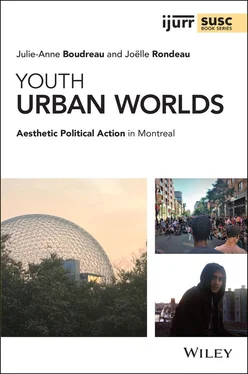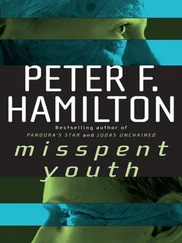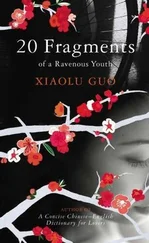In short, aesthetic political gestures and acts are expressive of what Black feminist scholar Christa Davis Acampora (2007, p. 5) calls ‘aesthetic agency’ and potentially ‘transformative aesthetics’. She writes that ‘the core idea of aesthetic agency is that integral to our understanding of the world is our capacity for making and remaking the symbolic forms that supply the frameworks for the acquisition and transmission of knowledge’ (Acampora 2007, p. 5) and our sensory dispositions. In this book, we explore this by immersing ourselves in various youth urban worlds.
In La révolution urbaine , written in the midst of the 1968 movement in Nanterre (Paris), Lefebvre (1970) specifically locates the potential for a Marxist revolution in the urban historical period. Indeed, urbanity, youthfulness, and political action have long been interrelated. This raises the question: Is the contemporary visibility of urban and youthful political action the simple continuity of the urban revolts of the 1960s across the world?
In the 1960s, as in the 2010s, young people were facing rapid processes of urbanization and globalization. They were constructing a clear generational rupture, what has been called a ‘cultural revolution’. There are, however, two major differences between the two historical contexts. The 1960s was a flourishing period of nation‐state construction, with the development in the Global North of the welfare state and the rise of social populism and national economic protectionism in the Global South. The 2010s was rather a period of nation‐state austerity measures and economic deregulation, in the North as in the South. The 1960s urban political mobilizations occurred in a period of economic boom, just before the economic crises of the 1970s and the rise of neoliberalism. The 2010s mobilizations represent instead the culmination of the struggle against neoliberalism in a context of global economic urban crisis generated by a mortgage debacle. One could argue that the global urban youth movements of the 1960s and 2010s represent the beginning and the end of what Tarrow (1998) would call a ‘protest cycle’, characterized by the visibility of youth and an urban logic of political action that fosters specific repertoires of action: spatial occupations, arts and cultural creativity, alternative lifestyles and rhythms, sexual liberation, embodied and spiritual explorations, global connections and interactions, closeness to ‘nature’, and more‐than‐human agency.
The development of global urban youth movements since the 1960s has been studied in France and Italy as the New Social Movement approach. In this literature, the objective is to uncover the structural socioeconomic and cultural transformations that led to the emergence of newly politicized issues (such as sexual orientation, feminism, and ecology) outside of the labour–capital nexus (see e.g. Melucci 1989; Touraine 1992). Inspired by Marx’s idea of labour as the motor of history, these authors define a social movement as a force that has transformative social power. The fact that social movement theory is interested in newly politicized issues that are particularly visible in young urban dwellers’ lifestyles might have initiated a reflection on the impact of youthfulness and urbanity on social mobilization. Yet, Lefebvre (1970), although not a social movement theorist per se, but widely perceived as writing within this context, is the only author who has explicitly raised this question. For this, he was criticized by Castells (1972) and Harvey (1973). In The Urban Question , Castells emphasizes that there is nothing specifically urban about the way history progresses. According to the young Castells, the prevailing motor of action is still class struggle. He rejects the idea that an urban mode of production is displacing the industrial capital–labour nexus and sees youthfulness as an irrelevant variable. He interprets political claims arising in cities as the contemporary manifestation of the capital–labour conflict, shifted from the workplace to the collective consumption spaces of the city. In Social Justice and the City , Harvey makes a similar argument, suggesting that the urban is still heavily dependent on industrial capital and thus cannot be analysed as a new mode of production. His evidence is that in the 1960s and 1970s, industrial capital was still far stronger than land capital. 8 Until the 1990s, social movement theory did not theorize the urbanity of these new movements. Youthfulness was always implied given the demographics of activists in these movements, but never directly theorized.
In the field of youth studies, beginning with the Chicago School, youngsters were associated with deviance: hoodlums, aggressors, wasters, and so on (Thrasher 1927; Cohen 1955; Becker 1973). The focus of this work was on explaining why social problems emerge and their consequences for the ecological equilibrium of cities. At its beginnings in Chicago, youth subcultural studies tended to explain transgressive youth behaviour by emphasizing that marginalization produces specific sets of needs and behaviours and that deviance is more prominent in cities because urbanity challenges traditional community ties (Simmel 1903; Whyte 1943). In order to face marginalization, it explained, youth with similar problems of social adjustment will get together and invent their own frames of reference as a sort of support system. Subcultures generally refer to relatively distinct (urban) social subsystems within a larger culture (Williams 2007). By the 1970s, however, youth subcultural studies in the United States was moving from sociology to criminology, emphasizing youth as potential criminals and leaving behind the earlier focus on youth cultural production.
Meanwhile, in the United Kingdom, Richard Hoggart was creating the Centre for Contemporary Cultural Studies, moving the centre of subcultural studies across the Atlantic Ocean. Hoggart was less concerned with how marginalized youth get together and more with explaining subcultural formations in terms of power relations. From Chicago’s explanation in terms of deviance, Hoggart and his team positioned youthfulness as class resistance (Clarke 1976). Henceforth, subcultures were understood as spaces of resistance to cultural hegemony, the most visible sign of which is youth styles. From Chicago’s ethnographic methodologies, youth subcultural studies turned towards semiology and phenomenology (Dillabough and Kennelly 2010) 9 . With this turn away from ethnography, the initial theoretical and empirical articulation between youthfulness and urbanity disappeared as subcultural studies moved from Chicago to Birmingham.
Straw (2002) suggests speaking in terms of urban scenes instead of subcultures. The idea of an urban scene emphasizes practices instead of stable identities. Because the city consists of ‘experiential fluxes and excesses’, individuals rely on urban scenes to find their bearings (Straw 2014). They offer places to see and be seen, but also to experience various identities and share common values. For Straw, a scene is a cultural phenomenon which participates in the effervescence of the city and its sociability. This is interesting because it focuses the analysis on the relationship between specific cultural activities and the space, time, and affectivity of the city (Born, Lewis, and Straw 2017). Yet, by moving away from subcultures, the concept of the urban scene has abandoned the initial concern with deviance and transgression. Political action is absent from this analysis.
During the1970s, in the francophone world, the sociologie de la jeunesse developed around very different sets of concerns centred in education and psychology. Researchers attempted to understand biological transformations and educational models. The 1980s marked an important shift towards a nonbiological conception of age in France, as in Quebec. The question became: How do young people enter adulthood? (Galland 2011). French sociologists identified various rituals constitutive of this transition to adulthood, such as moving out of the family home or having a child. Instead of studying marginalization or style (subcultures), the French‐speaking debate asked whether age was an efficient angle for social categorization (Gauthier and Guillaume 1999). If the British debate moved away from the urban, the French debate has never spatialized the youth question. It proposes a linear temporal model for understanding how youth grow up, how they grow out of youthfulness. It is not concerned with the specificities of being young and urban. For instance, when hip‐hop emerged in the French banlieues in the 1980s, the urbanity and spatiality of this cultural phenomenon was not considered relevant either by Bourdieu’s (1993) structuralist explanation or by Dubet’s (1987) more agency‐oriented analysis. In both cases, it was seen not as a youth subculture but as a poor copy of the North American original (Warne 2014, p. 59). The fact that French hip‐hop was born in and of the banlieue as a specific space and culture was not theorized.
Читать дальше












